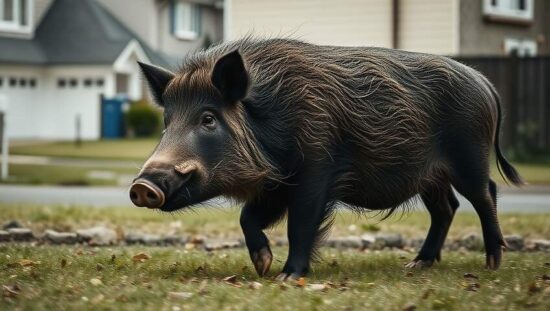Wild boar, traditionally known as shy inhabitants of forests and fields, are increasingly becoming a nuisance in residential areas. The animals are venturing into parks and gardens in search of insect larvae and earthworms and occasionally even attacking passersby.
A recent incident in Berlin’s Dahlem district saw a 49-year-old woman walking her dog sustain a deep laceration to her right leg above the knee caused by a wild boar. The artery was narrowly missed and the wound required stitches. The woman described herself as “very lucky”.
Berlin currently has a wild boar population exceeding 5,000. The city’s green spaces and gardens offer a readily available food source, leading some groups, known as “city boars”, to remain in residential areas year-round. This has resulted in a decrease in their natural fear of humans.
Faced with growing public concern, authorities are taking action, including organized hunts within city limits. In Berlin’s Zehlendorf district, five hunters are currently active with special permission to pursue the animals in parks and green spaces, primarily at night, utilizing artificial light and night vision equipment.
Innovative approaches are also being explored elsewhere. In Spain, hunters are using bow and arrow to target wild boar in populated areas, reducing noise and the risk of stray shots. While bow hunting is generally prohibited in Germany, the mayor of Stahnsdorf, Brandenburg, Bernd Albers, is seeking authorization to employ this method. He hopes the recently appointed state agriculture minister, Hanka Mittelstädt, will be more receptive to alternative hunting techniques than her predecessor.
In Braunlage, Lower Saxony, the mayor, Wolfgang Langer, has this year initiated the use of live traps in parks. Hunters set up large nets baited with corn, then remotely trigger the trap once a group of wild boar are underneath. Langer reports that this strategy has proven effective and the situation has noticeably improved after two such operations.





